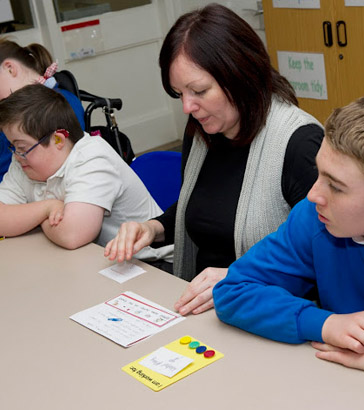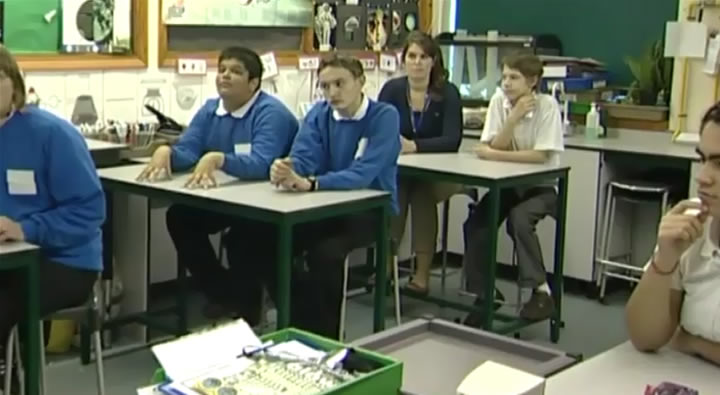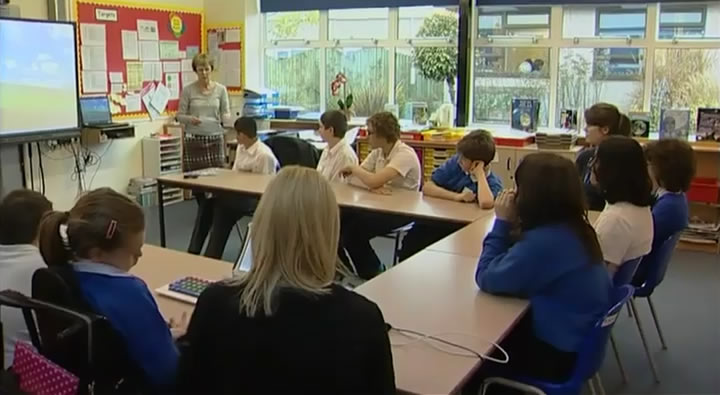
Children in special schools are usually grouped according to broad ability ranges. However within one classroom you will
still find pupils with ASC, MLD,
SLD and CLDD
As a result, within a special school classroom there are often many other adults in addition to the teacher supporting children's
learning.
Deploying additional adults effectively enables the teacher to increase the amount of differentiation. It also allows children with more complex needs to be taught together with their peers and to take part in complete lessons.
Watch this clip of a science lesson in a special school. How does Colin, the teacher, deploy his teaching assistant?
Some suggestions
Colin splits the class in two. Children working at national curriculum level 2 worked with a specialist science assistant. This group have simpler learning objectives. Colin plans with the assistant and she feeds back to him about children's progress at the end of the lesson.
Return
Have another look at this clip of the English lesson from earlier in the module and, this time, focus on the way the additional adults are used.
How does Sandra, the teacher, communicate her planning to the additional adults?
Some suggestions
Heidi's 'enablers' (TAs) meet Sandra before lessons, to make sure that they have all the key vocabulary ready for Heidi to access on her Toughbook.
Return
additional adults

List five ways that you saw additional adults being used in the English and science lessons.
Some suggestions
In the clips, additional adults:
- Worked with individual children
- Work with a small group on a practical activity
- Assisted with assessment for learning
- Helped to manage children's behaviour, and
- Supported the whole group activity.
Did you spot any more?
Return

